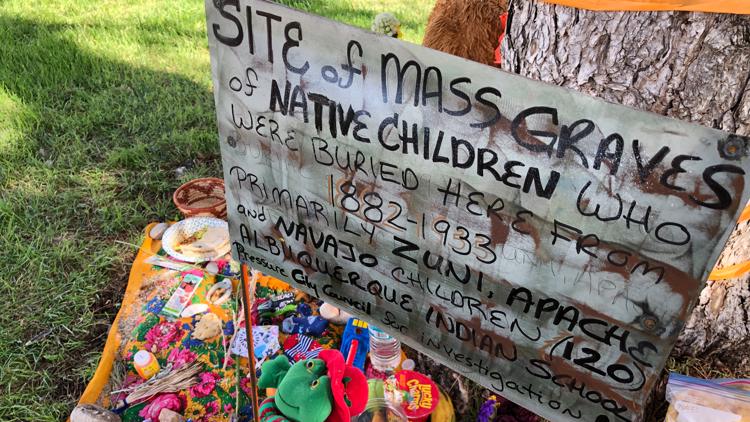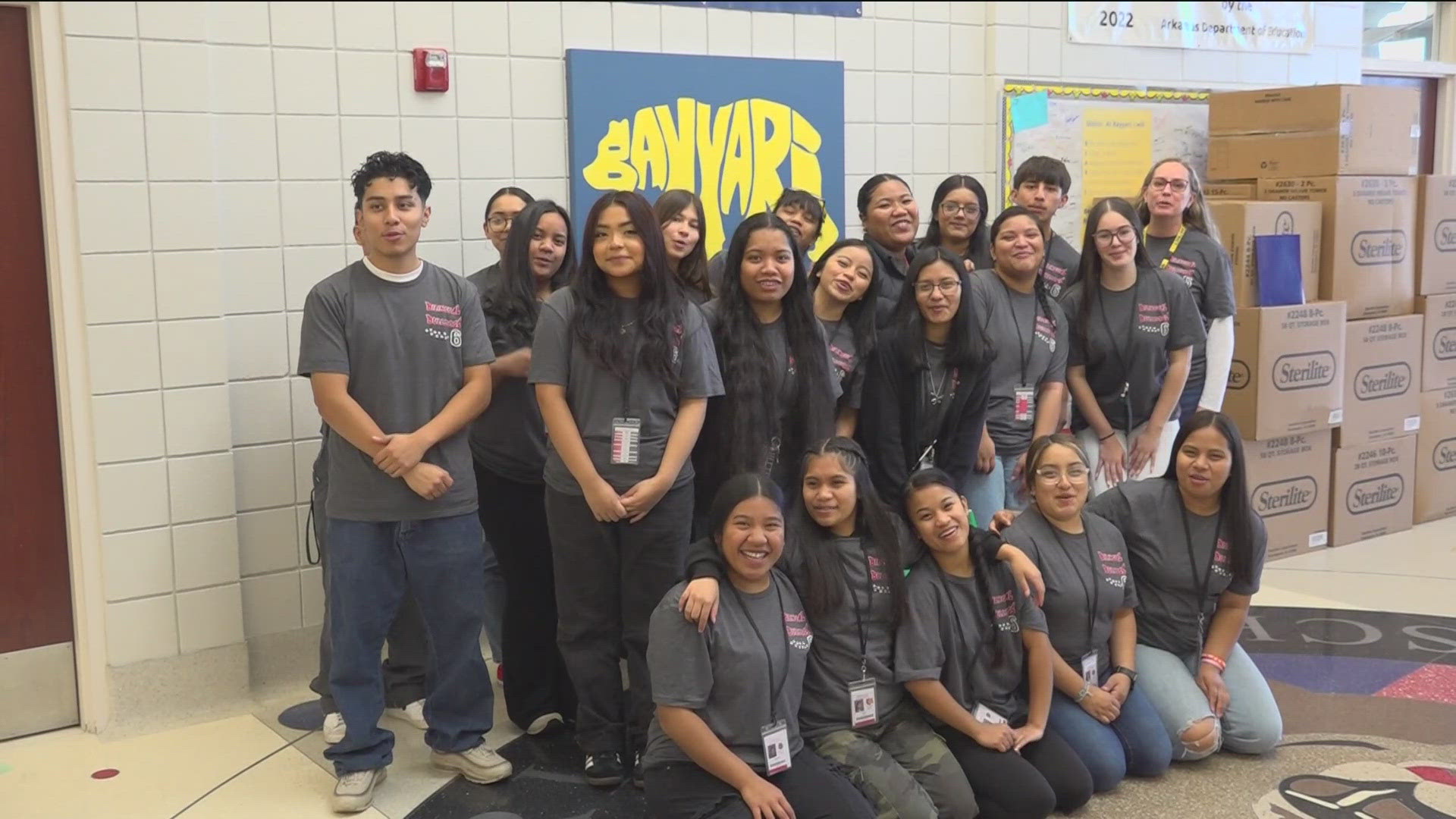SEATTLE — A first-of-its-kind federal study of Native American boarding schools that for over a century sought to assimilate Indigenous children into white society has identified more than 500 student deaths at the institutions, but officials say that figure could grow exponentially as research continues.
The Interior Department report released Wednesday expands the number of schools to more than 400, including 15 in Washington state, that were known to have operated across the U.S. for 150 years, starting in the early 19th century and coinciding with the removal of many tribes from their ancestral lands. It identified the deaths in records for about 20 of the schools.
The dark history of Native American boarding schools, where children were forced from their families, prohibited from speaking their languages and often abused, has been felt deeply across Indian Country and through generations.
Marilyn Scott, an Upper Skagit Indian Tribe member, remembers hearing stories from her grandparents about being raised in boarding schools.
"If they got talking to each other in their own language, then they would get their mouth washed out with soap," Scott said.
She was glad the federal government revealed and acknowledged the boarding school details. Scott said she hopes the report will result in more counseling for survivors, and their families, and will help bring back some of the traditional languages.
"And the recognition that the first people should not have went through the traumas that we did," Scott added.
Rep. Debra Lekanoff is the only Native American state legislator. She called the release of the study, a "moment in history."
Lekanoff said the report should bring about change.
”It opens up the eyes of the federal government, state government, and acknowledges the tribal governments work to review and a understand the historical trauma that is intertwined within every bloodline of our Native Americans here today," said Lekanoff, D-Anacortes.
Many children never returned home from the boarding schools, and the Interior Department said that with further investigation the number of known student deaths could climb to the thousands or even tens of thousands. Causes included illness, accidental injuries and abuse, officials say.
“Each of those children is a missing family member, a person who was not able to live out their purpose on this Earth because they lost their lives as part of this terrible system,” said Interior Secretary Deb Haaland, whose paternal grandparents were sent to boarding school for several years as kids.
The agency is in the process of poring through thousands of boxes containing more than 98 million pages of records, with help from many Indigenous people who have had to work through their own trauma and pain. Accounting for the number of deaths will be difficult because records weren’t always kept.
A second volume of the report will cover burial sites as well as the federal government’s financial investment in the schools and the impacts of the boarding schools on Indigenous communities, the Interior Department said. It has so far identified at least 53 burial sites at or near boarding schools, not all of which have marked graves.
Tribal leaders have pressed the agency to ensure that any children’s remains that are found are properly cared for and delivered back to their tribes, if desired. The burial sites’ locations will not be released publicly to prevent them from being disturbed, said Bryan Newland, the Interior Department’s assistant secretary for Indian Affairs.
At a news conference Wednesday, Haaland choked back tears as she described how the boarding school era perpetuated poverty, mental health disorders, substance abuse and premature deaths in Indigenous communities.
“Recognizing the impacts of the federal Indian boarding school system cannot just be a historical reckoning,” Haaland said. “We must also chart a path forward to deal with these legacy issues.”
Haaland, who is Laguna, announced an initiative last June to investigate the troubled legacy of boarding schools and uncover the truth about the government’s role in them. The 408 schools her agency identified operated in 37 states or territories, many of them in Oklahoma, Arizona and New Mexico.
The Interior Department acknowledged the number of schools identified could change as more data is gathered. The coronavirus pandemic and budget restrictions hindered some of the research over the past year, Newland said.
The U.S. government directly ran some of the boarding schools. Catholic, Protestant and other churches operated others with federal funding, backed by U.S. laws and policies to “civilize” Native Americans. The federal government still oversees more than 180 schools in nearly two dozen states that serve Native Americans, but the schools’ missions are vastly different from the past.
The Interior Department report was prompted by the discovery of hundreds of unmarked graves at former residential school sites in Canada that brought back painful memories for Indigenous communities.
Download our free KING 5 app to stay up-to-date on news stories from across western Washington.
Haaland also announced Wednesday a yearlong tour for Interior Department officials that will allow former boarding school students from Native American tribes, Alaska Native villages and Native Hawaiian communities to share their stories as part of a permanent oral history collection.
Boarding school conditions varied across the U.S. and Canada. While some former students have reported positive experiences, children at the schools often were subjected to military-style discipline and had their long hair cut.
Early curricula focused heavily on outdated vocational skills, including homemaking for girls.
A U.S. House subcommittee on Thursday will hear testimony on a bill to create a truth and healing commission modeled after one in Canada. Several church groups are backing the legislation.
Deborah Parker, chief executive of the National Native American Boarding School Healing Coalition, tearfully recalled stories of a boarding school on the Tulalip reservation where she’s from that had a small jail cell and a basement where at least one girl routinely was chained to a heater and beaten. She said others hid to shield themselves from abuse.
“I am concerned when we begin to open these doors for our boarding school survivors to come forward and share their stories,” she said.
The boarding school coalition, which created an early inventory of the schools and shared its research with the Interior Department, praised Interior's work but noted the agency's authority is limited.
“Our children deserve to be brought home," Parker said. "We are here for their justice. And we will not stop advocating until the United States fully accounts for the genocide committed against Native children.”



